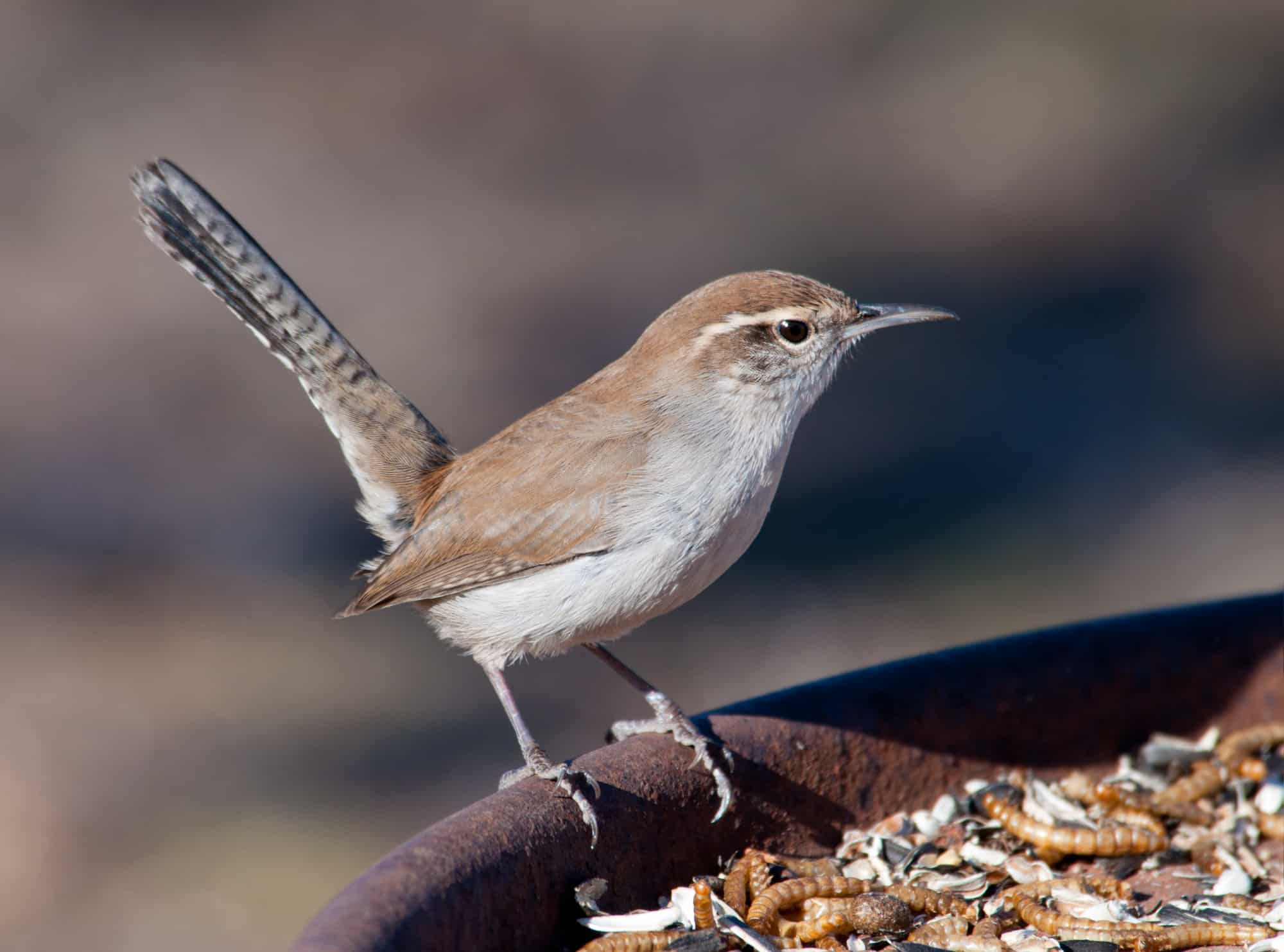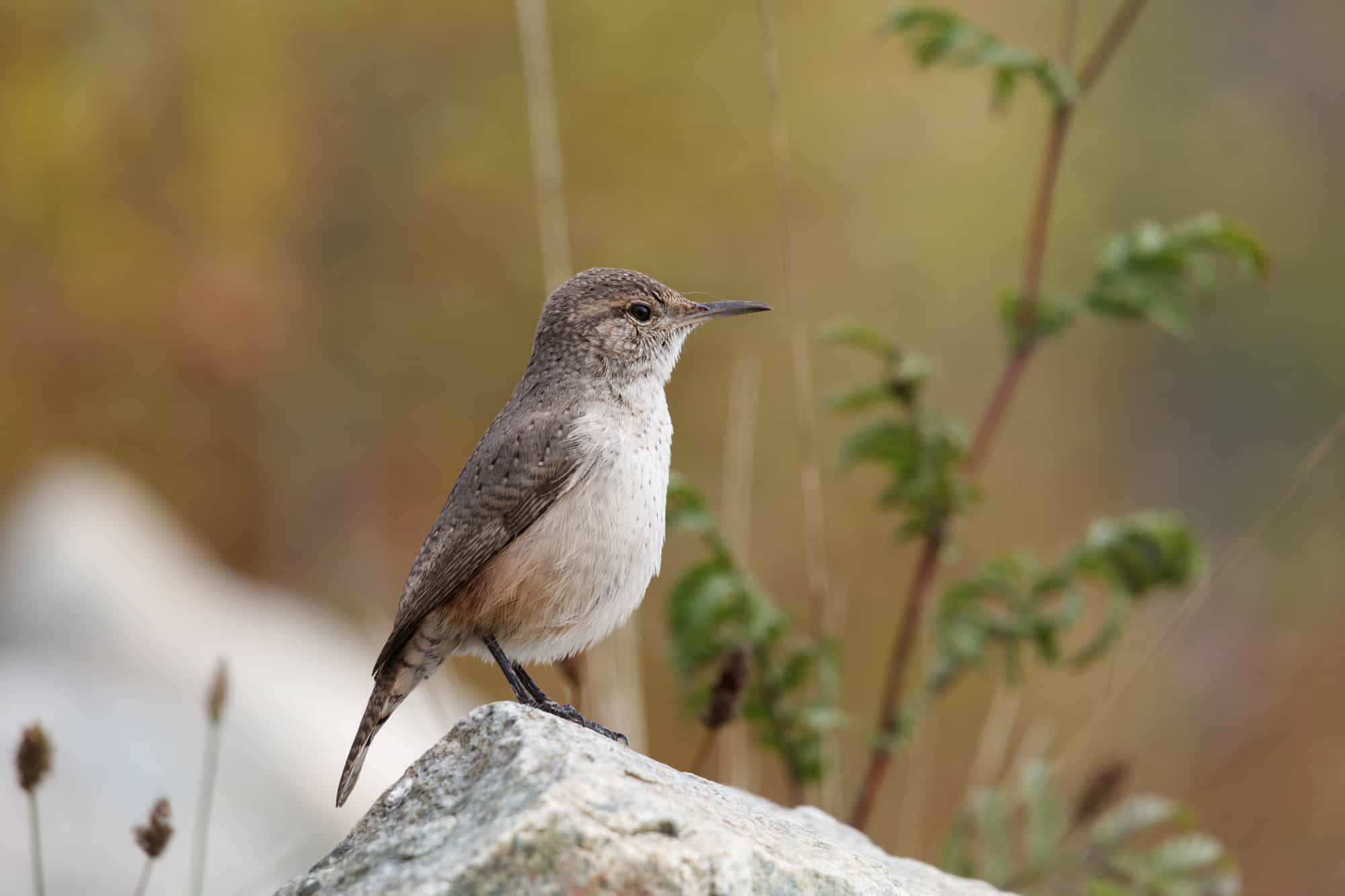Mississippi is a southerly lowland state with a subtropical climate. More than half of the state is covered in forest, and further areas are occupied by swamps and floodplains.
This rich tapestry of unspoiled landscapes offers plentiful homes for birds, many of whom come to Mississippi during the winter to enjoy the mild climate.
Of the 400+ bird species in Mississippi, 7 of them are wrens. Ever-popular with nature lovers and birdwatchers, wrens delight us with their diminutive proportions and larger-than-life personalities.
Most wrens come to Mississippi purely as a wintering ground, but a couple of species remain here for the breeding season, as well. During the spring and fall, even larger numbers of wrens can be observed passing through the state on their way to and from Central America.
But exactly which wren species can be spotted in The Magnolia State? It’d take a seasoned birdwatcher to be able to guess all seven of them, but why not see how many you can get before scrolling down?
Wrens in Mississippi, Starting With the Most Common
Carolina Wren

- Scientific Name: Thryothorus ludovicianus
- Length: 4.7-5.5 in (12-14 cm)
- Weight: 0.6-0.8 oz (18-22 g)
- Wingspan: 9 in (23 cm)
According to bird watchers reports on ebird.org, Carolina wrens are spotted by around ten times more bird watchers than any other wren species in Mississippi. These unrivaled Queens of the Eastern States are also substantially larger than any of the other common wrens in the state.
Carolina wrens are pretty birds with long white eyebrows, white chins, and a light pinkish to orange chest. The male’s simple song is a repetition of a tuneful chant, while females will occasionally chatter in response.
You can find Carolina wrens in overgrown shrubby surroundings in a wide variety of habitats. They seem equally at home in forest undergrowth as they do in a weedy corner of a suburban garden.
Mississippi residents can encourage Carolina wrens to raise a brood in their backyards by offering them a suitable nest box. They’ll occasionally visit platform feeders and tube feeders during the winter months, too.
House Wren

- Scientific Name: Troglodytes aedon
- Length: 4.3-5.1 in (11-13 cm)
- Weight: 0.3-0.4 oz (10-12 g)
- Wingspan: 5.9 in (15 cm)
Of thousands of bird species in North and South America, the house wren is the most widespread native bird of them all. You can find these cute little brown jobs almost everywhere from Northern Canada to the tip of Patagonia.
In Mississippi, however, house wrens are only reported by around 4% of birdwatchers during the winter months, and are not seen here in summer at all. The north of the state occupies a narrow band between the species’ winter and summer ranges, meaning they’re only seen here while passing through.
While they don’t visit bird feeders, you can improve the food supply of house wrens by avoiding pesticides and by leaving overgrown corners of your garden for them to find insects and spiders to eat.
Marsh Wren

- Scientific Name: Cistothorus palustris
- Length: 3.9-5.5 in (10-14 cm)
- Weight: 0.3-0.5 oz (9-14 g)
- Wingspan: 5.9 in (15 cm)
Whereas Carolina wrens and house wrens can be seen in backyards, you’ll probably need to go on a dedicated trip to see a marsh wren. These birds are so faithful to marshland habitats that they’re rarely seen anywhere without standing water.
The eastern subspecies of marsh wrens are seen most often during the winter in the southern half of Mississippi, but a small number nest in the confined coastal region of the state, too.
A good pair of binoculars and an attentive ear are essential companions for observing marsh wrens. These secretive birds are often difficult to see among the wetland vegetation, except for when belting out their assertive songs and calls.
These feisty birds will often sing from the top of the reedy vegetation by grasping two reed stalks in each foot. Their territorial antics become increasingly apparent in late winter as they prepare for the breeding season ahead.
Winter Wren

- Scientific Name: Troglodytes hiemalis
- Length: 3.1-4.7 in (8-12 cm)
- Weight: 0.3-0.4 oz (8-12 g)
- Wingspan: 4.7-6.3 in (12-16 cm)
The hardy winter wren is deserving of its name in Mississippi when it’s spotted by just under 3% of bird watchers during the colder months. In the summer, they fly to the Northern United States and Canada for breeding.
Your best chance of spotting winter wrens is among the undergrowth in damp, shady areas, especially near streams and waterways. Look out for them hopping around on fallen branches and tree stumps looking for insects and other invertebrates to eat.
Winter wrens are very closely related to their Western equivalent, the Pacific wren, but the two can be told apart by their songs. The winter wren is considered to have the more musical voice of the two, and will often sing for a longer time than their westerly cousin.
Winter wrens will also sometimes visit backyards, and residents of Mississippi can help them out by leaving up their nest boxes over the winter. The otherwise solitary winter wren is famous for congregating in cavities to stay warm during cold nights!
Sedge Wren

- Scientific Name: Cistothorus stellaris
- Length: 3.9-4.7 in (10-12 cm)
- Weight: 0.3oz (7-10 g)
- Wingspan: 4.7-5.5 in (12-14 cm)
A close relative of the marsh wren is the sedge wren – notice how the two species share the same genus name. Sedge wrens are slightly smaller than marsh wrens, though, and are also much rarer.
But it’s a difficult task to gauge the sedge wren’s true population as they’re one of the most difficult birds to observe in the wild! Instead of flying, they’ll often creep through their sedge cover and are so well camouflaged that they make life difficult for bird watchers except for when they’re singing.
Sedge wrens are purely winter visitors in Mississippi, where they can be found state-wide, except for the colder, northeastern corner of the state. In spring, they migrate to the Northern USA and Central Canada for breeding.
They’re usually found in slightly drier habitats than marsh wrens, including damp meadows. Although official reports state that sedge wren numbers are stable, some scientists are concerned that their numbers are declining due to habitat loss.
Bewick’s Wren

- Scientific Name: Thryomanes bewickii
- Length: 5.1 in (13 cm)
- Weight: 0.3-0.4 oz (8-12 g)
- Wingspan: 7 in (17.8cm)
While Bewick’s wren remains a common bird in the Southwestern United States, their eastern populations have plummeted over the last several decades. According to ornithologists in Alabama, Bewick’s wren may have declined more than any other bird in the Southeast.
The exact cause of this dramatic reduction hasn’t been established, but it’s thought that competition from house wrens and habitat loss have had a significant impact. Some scientists also blame climate change.
While Bewick’s wren would have once been seen more regularly in Mississippi, they’re now only spotted by less than one in a thousand bird watchers here.
This is a shame because Bewick’s wrens are very pretty birds with white eyebrows, a light gray belly, and a long tail that is often flicked and fanned to reveal its white corners. If you do spot one here, be sure to report it to the Mississippi Ornithological Society.
Rock Wren

- Scientific Name: Salpinctes obsoletus
- Length: 4.9-5.9 in (12.5-15 cm)
- Weight: 0.5-0.6 oz (15-18 g)
- Wingspan: 8.7-9.4 in (22-24 cm)
According to my Sibley’s Guide to Birds, the rock wren is only a true resident species west of Central Texas. But these adventurous little birds have a penchant for wandering, and can even be found on the east coast once in a blue moon!
- Sibley Guide To Birds, 2nd Ed
- Sibley, David Allen (Author)
- English (Publication Language)
Last update on 2024-04-27 / Affiliate links / Images from Amazon Product Advertising API
They’re very rarely spotted in Mississippi, but they do show up here every few years. Rock wrens are larger than many wren specie
s and are fairly pale in color. Their long bill and long legs give them a singular, elegant appearance.
In their Western home, rock wrens are typically found among rock piles, and will often use a rock to perch upon as they sing their buzzy song.
As with Bewick’s wren, any sightings of rock wrens in Mississippi deserve to be reported to the Mississippi Ornithological Society. It’s even better if you can send them a good photo, too!
Conclusion
Of the eleven wrens in North America, seven of them can be spotted in Mississippi.
Only the Carolina wren can be considered a truly common species here, but the variety of other species keeps things interesting for birdwatchers looking to score those rarer, prized sightings!
Red-bellied woodpeckers, common grackles, and blue grosbeaks are a few of the other fascinating birds to be found in Mississippi. You can find out more about them and many others in our Guide to 24 Beautiful Birds of The Magnolia State.

